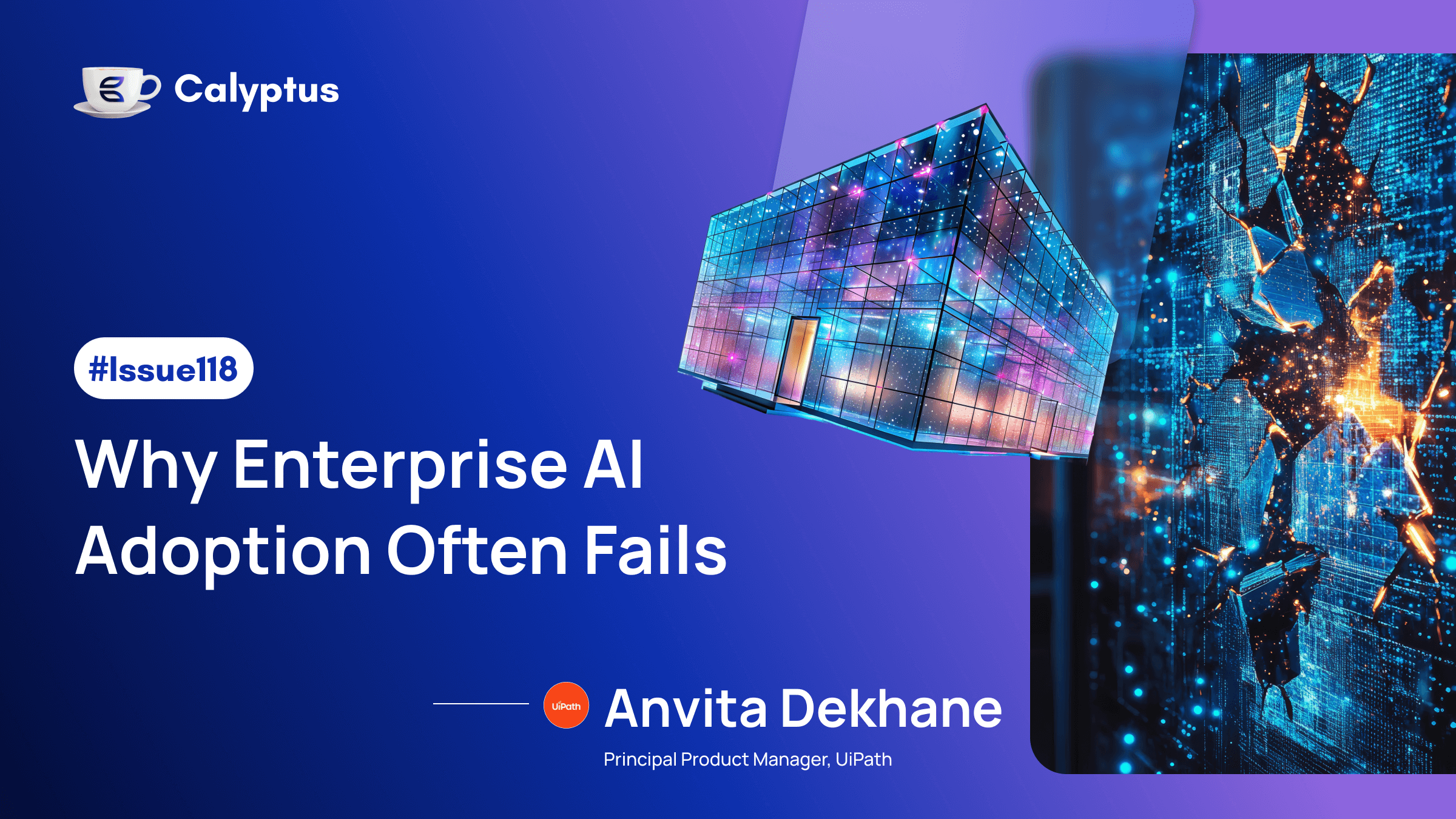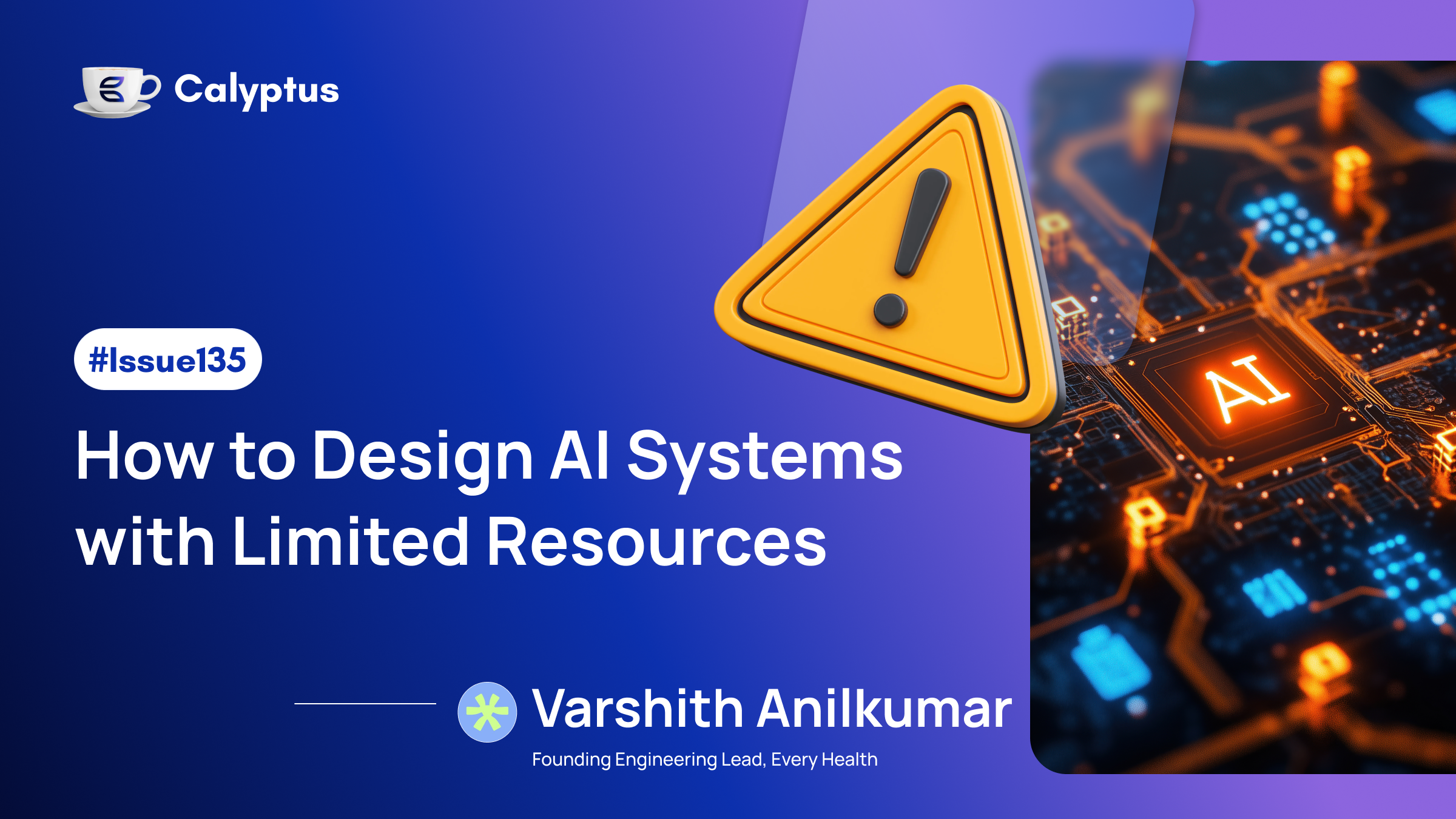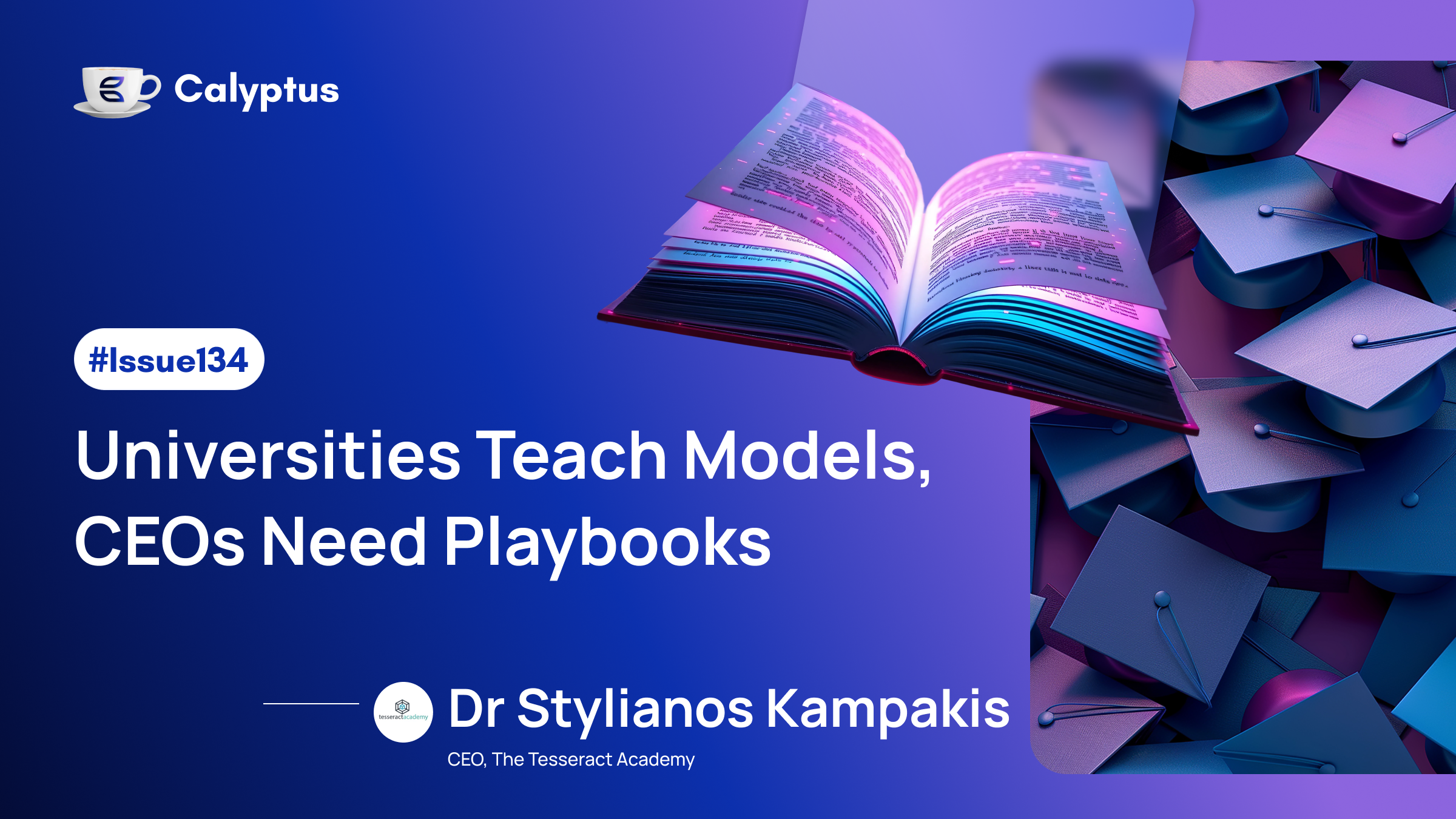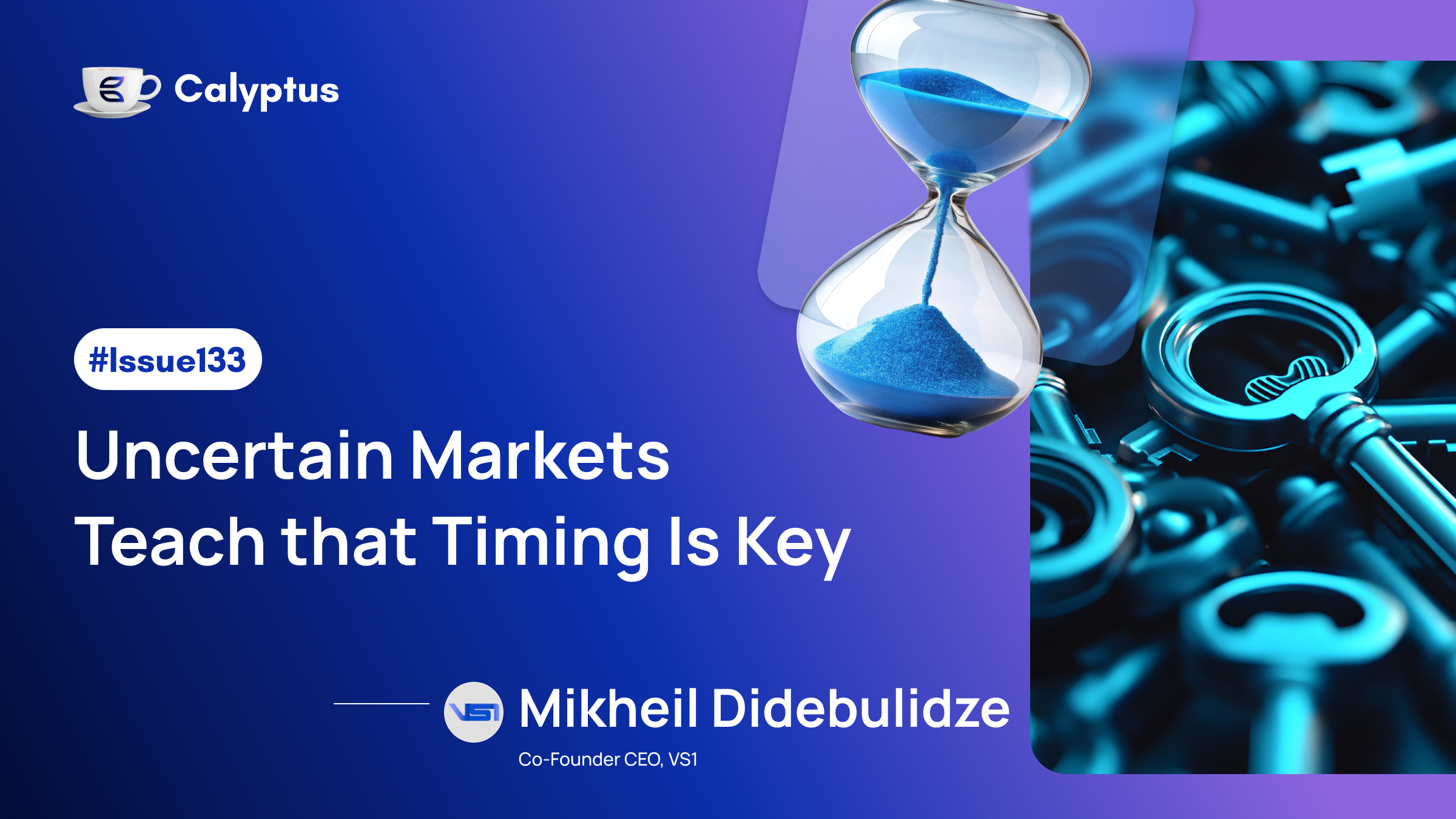In this edition of Coffee with Calyptus, we sit down with Anvita Dekhane, Principal Product Manager at UiPath. She shares how her investor instincts continue to shape her product bets, what it really takes to scale automation in complex organizations, and why “AI-washing” is the trap she refuses to fall into. If you’re curious about building enterprise-ready AI with both urgency and discipline, this conversation is packed with insights.

From Sequoia to UiPath, you’ve gone from evaluating disruptive startups to building automation products yourself. What mindset shift did that transition require?
Moving from Sequoia to UiPath required a fundamental mindset shift: from evaluating opportunities through an outside-in lens to building products from the inside out.
At Sequoia, my focus was on the big picture, factors including market size, tailwinds, and macro trends. The goal was to identify where disruptive opportunities could emerge and which products were beginning to demonstrate early signs of product–market fit.
At UiPath, by contrast, my day-to-day work demands a bottom-up perspective. Instead of scanning broad markets, I need to dive deep into product experiences, user flows, and end-to-end customer scenarios. It’s about solving real problems, coordinating across teams, and relentlessly driving customer success.
That said, I’ve found my investor instincts remain valuable. My default habit of stepping back to ask, “What’s the bigger opportunity here?” helps me steer product evolution without getting lost in execution. And having built my own consumer internet business post-Sequoia, I’ve developed empathy for founders that makes both building and angel investing more grounded.
In short, the shift has been from an evaluator of opportunities to a creator of them - but both perspectives continue to complement each other and shape how I approach building enterprise-ready agentic solutions today.
At UiPath, you’re leading Business Process discovery and optimization. In plain speak, what’s the big leap you’re trying to create for enterprises, and why now?
Business processes in enterprises are inherently complex. Take something as familiar as a loan application: it can take weeks to process because it involves multiple sub-processes, cross-team dependencies, and constant switching between different systems across legacy, on-prem, and cloud. All of this makes processes slow, opaque, and difficult to optimize.
At UiPath, our ambition is to make this complexity visible and actionable. With AI-powered analysis, we can automatically discover processes end-to-end, map where inefficiencies exist, and highlight the best opportunities for improvement. Instead of guesswork or lengthy consulting projects, enterprises get out-of-the-box process maps, detected bottlenecks, and clear recommendations for where automation and agentic loops can deliver the greatest ROI.
Why now? Because enterprises are eager to embrace AI but face two big challenges: realizing tangible efficiency gains and doing so within the guardrails of governance and compliance. By combining deep process understanding with AI, we’re helping organizations move from fragmented, hard-to-track workflows to streamlined, intelligent operations, making enterprise-scale adoption of AI not just possible, but practical.
You scaled Automation Cloud Robots before moving into your current role. What was the hardest part of taking that product from early stage to impact at scale?
When building for enterprises, one of the hardest challenges is clearly defining the Ideal Customer Profile (ICP) and the buyer persona within the organization. In consumer products, the user and the buyer are often the same, but in enterprise products they can be very different. Getting this right from the start is critical, because it shapes in-product experiences, go-to-market motions, and the type of feedback you can gather.
When scaling Automation Cloud Robots, this challenge became very real. We had to design not just for the end user running automations, but also for the central IT team lead, who was our primary buyer. That meant thinking beyond product functionality to include pricing guides, setup workflows, ROI calculators, and other collateral that spoke to IT decision-makers while still keeping the product intuitive and valuable for users. Balancing those needs was the hardest part of taking the product from early stage to enterprise-wide adoption at scale.
You’ve been in both VC and product leadership, how does your investor lens influence the way you prioritize AI-driven automation bets at UiPath?
My investor experience shapes the way I approach AI-driven automation bets in two important ways. First, as an investor I was trained to establish baselines, evaluate multiple approaches, and set realistic expectations before committing resources. That discipline helps me navigate a fast-moving AI ecosystem where speed matters, but so does making thoughtful, strategic choices about what to build and when.
Second, the investor lens keeps me focused on outcomes at multiple levels. As a product builder, I zero in on customer scenarios, gaps, and patterns to ensure we are solving the right problems. But I also step back to measure success beyond adoption telemetry. I look at how a product contributes to UiPath’s broader goals, brand impact, upsell potential, incremental revenue, or reduced churn.
In short, my investor mindset brings a balance of urgency and discipline: moving quickly where AI innovation demands it, while staying grounded in customer value and enterprise impact.
AI is reshaping automation fast. How are you and your team practically embedding AI into UiPath’s agentic automation products without it being just “AI-washing”?
We avoid “AI-washing” by grounding everything in customer value. At UiPath, being customer-first is not a slogan but a practice. We engage deeply with customers at every level of their organization to understand real pain points and then design solutions that address them at scale.
As the AI landscape evolves, we apply a simple test: does this capability meaningfully improve a customer’s process or outcome? That keeps our agentic automation products focused on real-world applicability rather than novelty. Success is measured by the value customers derive, whether it is efficiency gains, faster time to value, or reducing total cost of ownership.
Finally, we emphasize ROI alongside problem-solving. It is not enough to build powerful AI features; they must deliver tangible, measurable business impact. By holding ourselves accountable to both customer experience and ROI, we ensure AI is embedded as a driver of automation outcomes, not just as a label.
We hope you enjoyed this edition of Coffee with Calyptus. Stay curious, stay inspired, and keep building what matters. Explore more editions and insightful articles at




